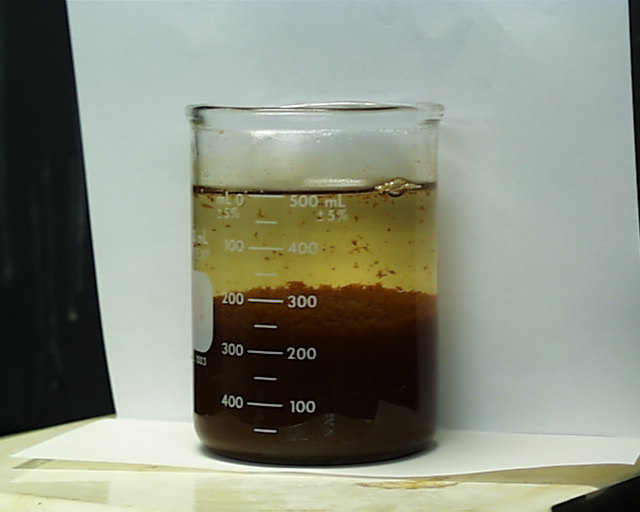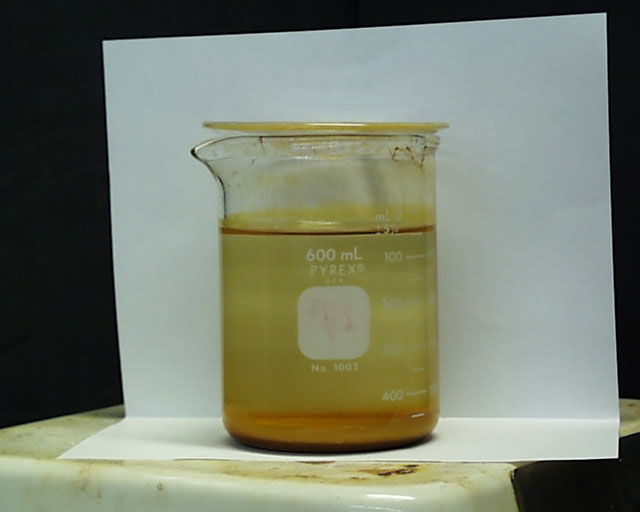
Precipitation from a Homogeneous
Solution
by Oliver Seely
This Web page and accompanying photos are in the public domain and may be copied
without restriction.
If a precipitating agent is produced over a long period of time in a homogeneous solution the
level
of supersaturation remains low and compact crystal precipitates usually result instead of
coagulated
colloids. The resulting suspension of precipitate is compact, crystalline and easily filtered,
whereas a precipitate formed by the addition of a precipitating agent is not easily filtered owing to
a high level of relative supersaturation at the point where the reagent is added.
500 mL 0.02 M Fe2(SO4)3 was prepared and 20 mL
12 M NH4OH(aq) was added to
complete the precipitation of Fe(OH)3 (s) according to the equation
Fe3+ + 3 NH4OH(aq) ---> Fe(OH)3 (s) + 3
NH4+

 The resulting
solution is shown in the photograph at the left.
A second sample of 500 mL 0.02 M Fe2(SO4)3 was
prepared and 7.2 g urea, (NH2)2CO , was dissolved in the ferric sulfate
solution. On the addition of heat the generation of ammonium hydroxide occurs
according to the reaction
The resulting
solution is shown in the photograph at the left.
A second sample of 500 mL 0.02 M Fe2(SO4)3 was
prepared and 7.2 g urea, (NH2)2CO , was dissolved in the ferric sulfate
solution. On the addition of heat the generation of ammonium hydroxide occurs
according to the reaction
(NH2)2CO + 3H2O ---> CO2 + 2 NH4OH.
After two hours at a temperature just below the boiling point, the resulting
precipitate settles in a thin layer on the bottom (photo at right). This precipitate has a texture
considerably different from that on the left which is flocculent and of low density. Note: this
reaction seems to be pH sensitive. A first attempt at preparing the demonstration on the right
included adding a small amount of hydrochloric acid to the ferric sulfate so as to assure that all
ferric ion would remain in solution. After two hours of heating no precipitate had formed. From
this experience one would presume that if this method were to be used as part of a quantitative
analysis the pH would have to be adjusted to a point just below that which is high enough to
initiate precipitation of ferric hydroxide before starting the process of heating the solution with
urea added.
Here here are two time lapse videos of the process.
demonstration 1 in Windows Media.
demonstration 2 in Windows Media.